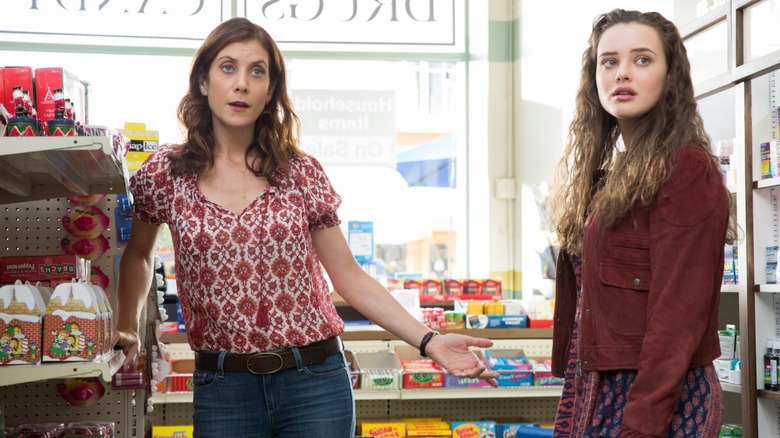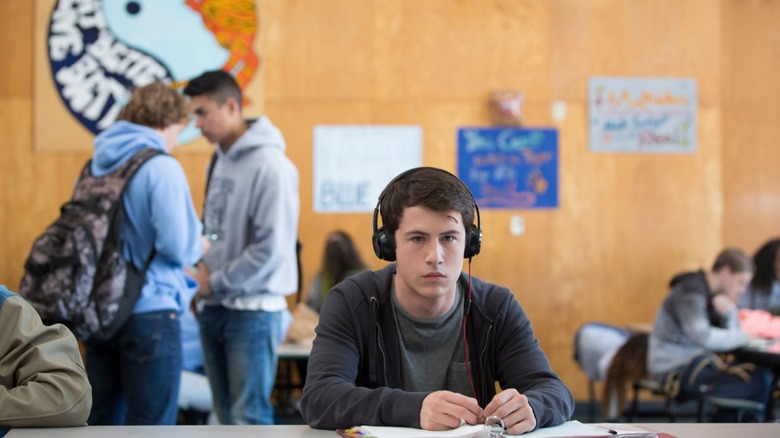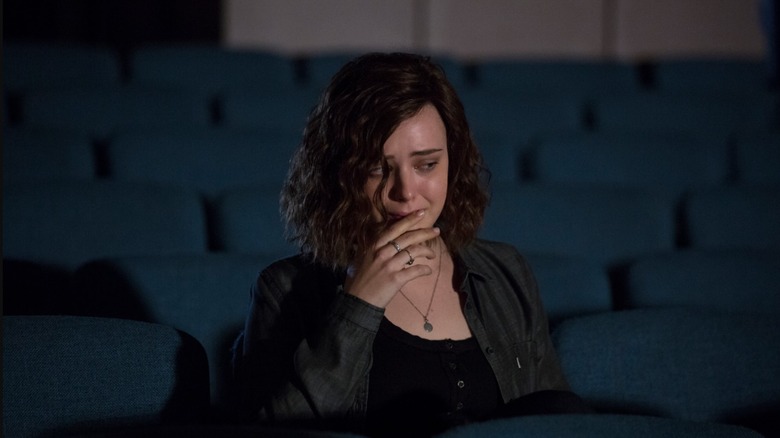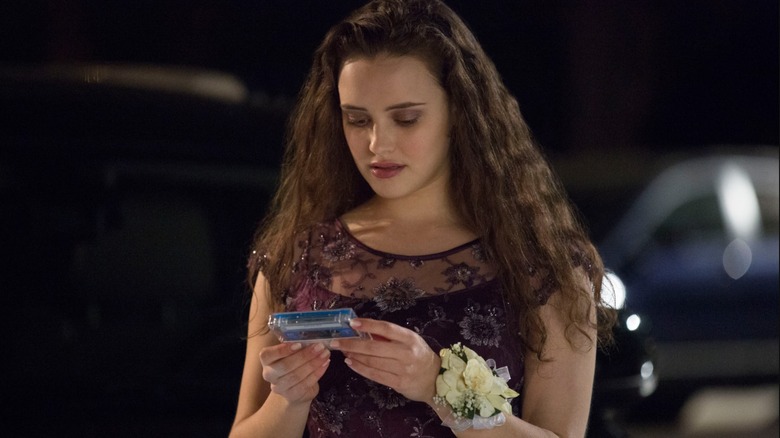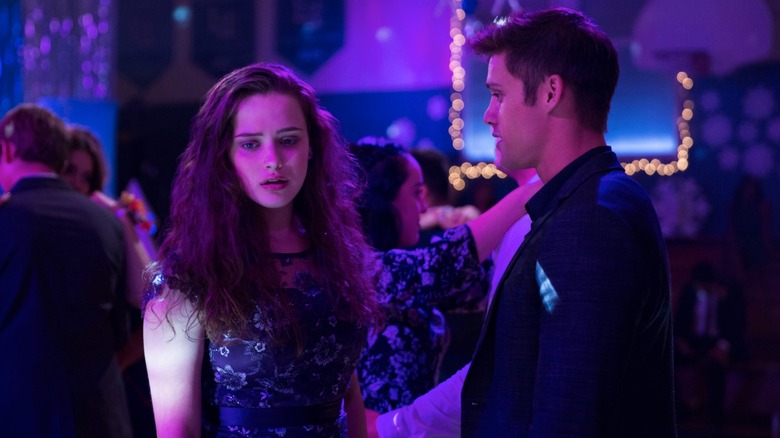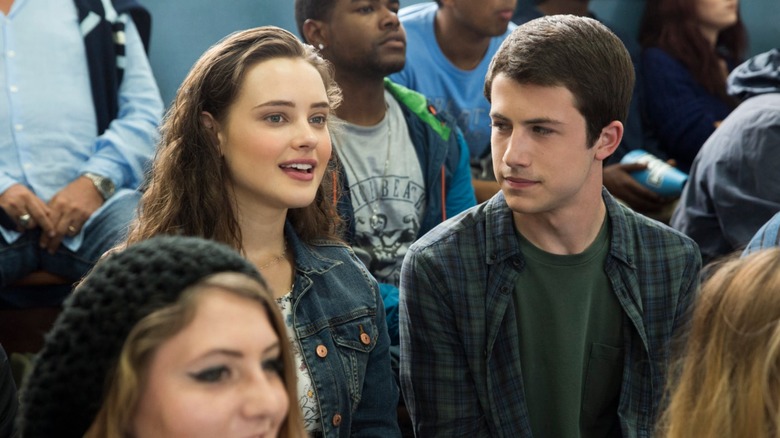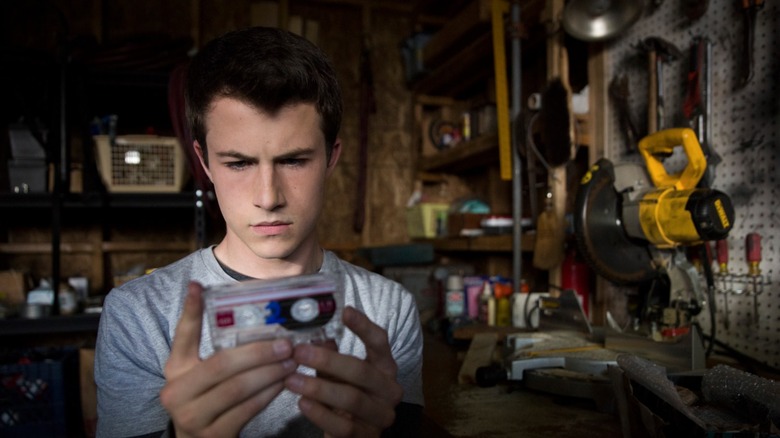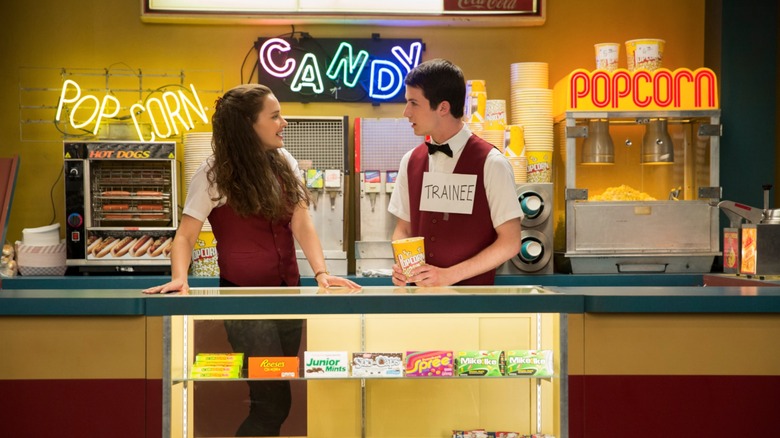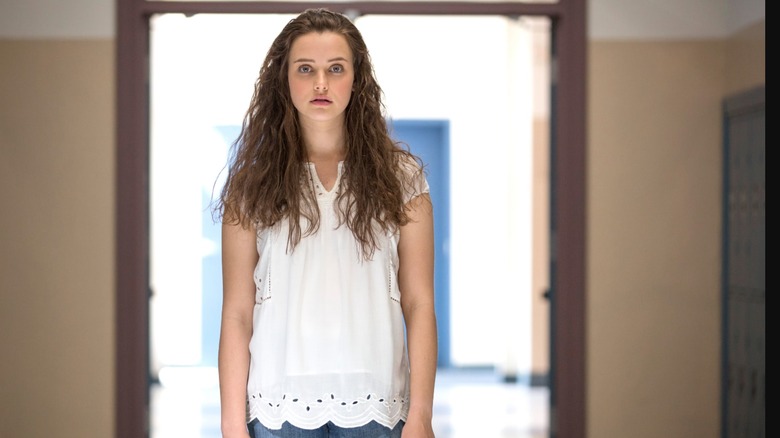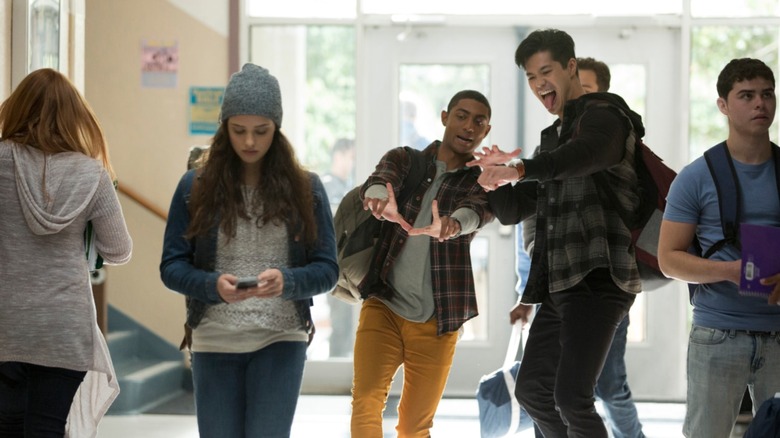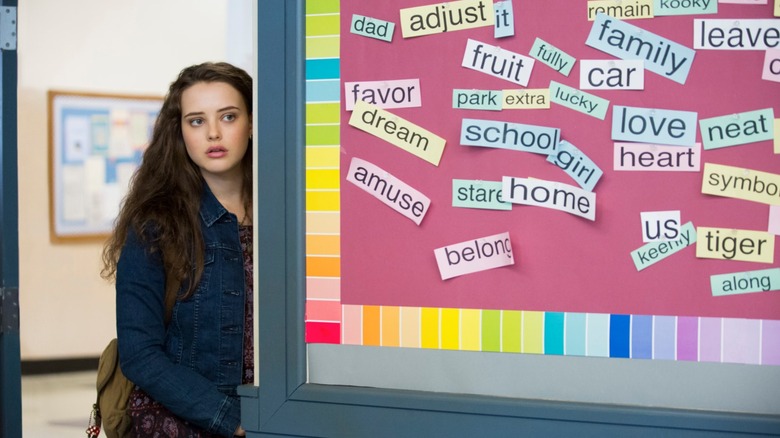13 Reasons Why: The Real Reason Why Parents Hate It
13 Reasons Why premiered in March 2017 on Netflix, based on a 2007 novel of the same name. The show, which was executive produced by superstar Selena Gomez, tells the story of teenager Hannah Baker and the events leading to her eventual suicide. Featuring fictional, yet harrowing accounts of sexual assault, substance abuse, and suicide, 13 Reasons Why made headlines for both its graphic depictions of traumatic events and the effects such depictions would have on the show's young audience.
Mental health experts warned of the real-world consequences 13 Reasons Why could have among its teenage fanbase, including copycat suicides. Parents accused Gomez and the show of triggering mentally ill and vulnerable teenagers to kill themselves. John Herndon, the father of a 15-year-old who killed herself shorty after binge-watching the show, reportedly "begged" Gomez and her team to cancel the show. "[Selena Gomez] is an extremely disturbed individual to think that this show has any kind of redeeming social value at all," Herndon told Radar Online.
Unfortunately for concerned parents like Herndon, efforts to pull the show from the streaming service proved futile when 13 Reasons Why was renewed for a second season in May 2017. Here's a look at why 13 Reasons Why caused an uproar from parents, mental health experts, and suicide prevention advocates alike, and how the hit Netflix show could better convey the seriousness of such sensitive subjects.
Suicide should never become a meme
Before her suicide, Hannah recorded the story of what led her to kill herself on seven cassette tapes. Each tape serves as narration for the show and is dedicated to a certain person who, according to Hannah, played a role in her decision to end her life. At the start of each recording, Hannah's wry, yet haunting voice introduces both the recipient and the audience to a new reason for her death: "Welcome to your tape."
Soon after the show's premiere, those four little words went viral in the form of memes poking fun at mild inconveniences. Guacamole is extra? Welcome to your tape. You ate my last chicken nugget? Welcome to your tape. Netflix even got in on the joke by tweeting the phrase at Hulu, its biggest competitor. The memes may all be in good fun, but mental health experts have been quick to speak out on the seriousness of the issue at hand — and criticize the show for "irresponsibly" depicting suicide's cause and effect. Some things should not be lessened to fodder for memes — especially suicide.
Playing the blame game
13 Reasons Why uses depictions of bullying and sexual assault to justify not only the tapes Hannah left behind for those who wronged her, but also the direct cause of her suicide. In doing so, the show appears to blame Hannah's suicide on the people who hurt and failed her, never making the distinction that Hannah's choice was hers, and no one else's.
The National Association of School Psychologists cautioned that "vulnerable youth" should not watch the series, stating, "[The show's] powerful storytelling may lead impressionable viewers to romanticize the choices made by the characters and/or develop revenge fantasies."
Phyllis Alongi, clinical director of the Society for the Prevention of Teen Suicide, told NBC News that "We feel it was done irresponsibly and we don't agree with many portrayals including of Hannah's death, memorialization, and placing blame on others." In the same NBC News article, Dr. Victor Schwartz, medical director of the JED Foundation, agreed, saying, "We really try to shy away from saying that someone who died of suicide is the result of something someone did." He also noted the "horrifying burden of guilt" such an accusation would leave on survivors.
"A better depiction would have been no depiction"
In March 2018, Netflix announced that a new warning video would be shown before the first episode of each season, featuring actors from the show cautioning those struggling with mental illness and thoughts of suicide to seek professional help. Though well-intentioned, the new warning might be too little, too late.
Each episode of the show's first season offers more insight to Hannah Baker's suicide; each cassette tape a clue as to why the teen took her own life, while the last episode shows us how — with incredibly graphic detail. According to mental health experts, a better depiction would have been no depiction. Dan Reidenberg, executive director of Suicide Awareness Voices of Education, told the Chicago Tribune that "there should be no reason [why any kind of production] would be so descriptive and so graphic."
He's not alone. The "Recommendations for Reporting Suicide" is a list compiled by mental health experts intended to provide guidance to the media on reporting/portraying suicide. According to the guidelines, "Risk of additional suicides increases when the story explicitly describes the suicide method [...] and sensationalizes or glamorizes a death." In other words, struggling, vulnerable viewers who feel they relate to Hannah and her story may take inspiration from the character's suicide, down to the very method she used — resulting in tragic "copycat suicides."
No viable alternatives to suicide
Not only does the 13 Reasons Why explore feelings familiar to anyone who has ever been a teenager, such as self-consciousness, loneliness, and heartache, but the show also depicts more troubling, difficult-to-discuss issues such as sexual assault, the severity of bullying, and depression. It's not the depiction of such tough topics that's the issue, but rather the lack of potential solutions to said tough topics. According to an op-ed piece that suicide prevention advocate, MollyKate Cline, wrote for Teen Vogue, the show offers no viable alternative to suicide for Hannah. Cline wrote, "My problem [with the show] is that the audience is shown what not to do without examples of what they actually should do."
In fact, many believe 13 Reasons Why may discourage teens who experience trauma or suicidal thoughts from confiding in people who can help. One particularly problematic scene features Hannah confiding in her school's guidance counselor that she was the victim of sexual assault. The guidance counselor seems to place blame on Hannah for the "encounter," implying that she had simply done something with a boy that she now regretted. This disheartening conversation sends the message to teenagers that confiding in a trusted adult doesn't guarantee they'll be believed — instead, they might be blamed. Hannah's heartbreakingly unmet request for help was the show's only attempt at portraying an alternative to suicide.
Hannah's character only exists for Clay's development
The movie (500) Days of Summer begins with a voice-over disclaimer: "This is the story of boy meets girl, but you should know upfront, this is not a love story." The same could be said for 13 Reasons Why. Though vastly different in seemingly every way, the two do share one striking similarity: the Manic Pixie Dream Girl.
For those unfamiliar, "Manic Pixie Dream Girl" is a term coined by writer Nathan Rubin in 2007 to describe Kirsten Dunst's Elizabethtown character. According to Rubin, the term exists "to teach broodingly soulful young men to embrace life and its infinite mysteries and adventures." Though 13 Reasons Why presents itself as a show about Hannah Baker, the overarching plot of the show focuses more on the impact her suicide has on Clay, Hannah's friend who also harbored romantic feelings for her, and the action he takes to seek some kind of justice for his friend and crush.
According to The Phillipian, "[The Manic Pixie Dream Girl] trope prevents the show from fleshing out Hannah Baker as a person [...] who struggles with a real, debilitating, and dangerous mental illness." Hannah's character development is minimal, while Clay's character development stems directly from her death — it seems like Hannah died only so Clay could discover the fragility and preciousness of life.
A step-by-step guide to suicide
It's no secret that the most talked (and written) about scene from 13 Reasons Why is Hannah Baker's suicide. Calling the show's depiction of suicide "controversial" seems like the understatement of the century, especially considering the sheer amount of backlash and blame the graphic bathtub scene received.
Showrunner Brian Yorkey told Vanity Fair that his intention for Hannah's suicide scene was to "present suicide as something that's painful and horrific — and certainly never an easy way out." While 13 Reasons Why certainly succeeded in its attempt to portray the graphic nature of such a suicide and the heartbreak of Hannah's parents who found their daughter a few moments too late, many believe the realistically graphic imagery to be the root of the scene's problem.
A suicide attempt survivor known only as Ashley told Teen Vogue she believes the scene could potentially serve as a "step-by-step" guide on how to commit suicide using the same method as Hannah. "You didn't have to show her getting the blade and cutting into her wrists," she argues, saying the scene would still have made an impact without depicting every detail.
The show left out, arguably, the most important reason why
With a title like 13 Reasons Why, it's reasonable for one to expect — well, 13 reasons why. However, the audience isn't provided with any "reason" for Hannah's death. Instead, the 13 supposed reasons come in the form of 13 people Hannah felt were at fault for her decision to take her own life. Not only does this perpetuate the false narrative that a person's suicide can (and should) be pinned on those around them — blaming Hannah's suicide on others leaves no room for discussing the actual culprit: mental illness.
According to the National Alliance on Mental Illness (NAMI), about 90% of individuals who commit suicide also experience mental illness. Does 13 Reasons Why expect viewers to believe that Hannah is part of the slim 10% of suicide victims who don't experience mental illness? While Hannah's mental illness may be apparent to viewers, the show makes no attempt at diagnosing or discussing the inner-workings of her brain. In addition to mental illness, NAMI cites several other potential risk factors for suicide, including a family history of suicide, substance abuse, access to firearms, and chronic illness. However, 13 Reasons Why cites only one — the actions of others.
It's like Hannah never died — and that's incredibly dangerous
Hannah Baker dies before the audience is even introduced to the world she left behind — so why is the actress who portrays her, Katherine Langford, best known for her depiction of the troubled teen? Because, in Clay Jensen's eyes, Hannah never truly died.
Hannah's story is told through cassette tapes and flashbacks, the latter of which usually begin when Clay seems to catch glimpses of Hannah in their old haunts. He sees her walking through the hallways at school, stealing glances at him from her locker, working behind the counter at her old job — everywhere. It's almost as if Hannah never left at all — especially since the cassette tapes allow her to have a voice, even after death.
Dan Reidenberg, executive director of Suicide Awareness Voices of Education, told The Washington Post that he believes that allowing Hannah to tell her own story "glamorizes the death and sends a potentially dangerous message to viewers." Mental health advocate Alyse Ruriani agrees, telling Teen Vogue, "Having her reappear over and over makes the impact of the fact that she is dead get lost. When you die by suicide, there is no coming back." By allowing Hannah to be ever-present after her death, 13 Reasons Why fails to represent the definitiveness of suicide.
Depicting little hope after sexual assault
Hannah's suicide isn't the only intensely graphic and uncomfortable 13 Reasons Why scene. The show also depicts not one, but two accounts of rape and sexual assault involving Hannah and her friend Jessica, respectively. Jay Asher, author of the 2007 novel that the Netflix show is based on, defended the show's depiction of sexual assault to Buzzfeed News, citing the importance of authenticity. "Some people are saying it was too graphic, but it's a graphic thing," Asher said. "If you're saying it's never appropriate to show it, then you're saying it's something to be hidden."
While some commend the show's depiction of sexual assault, many took issue with the fact that the show did not depict a victim of sexual assault who is believed and receives the help they desperately need. More disturbing than the assault itself is the guilt and isolation Hannah harbors until her death. As a blog post on the Pennsylvania Coalition Against Rape's website notes, viewers do see Jessica tell her father that she was raped in the last episode of season one, and "can assume she will get help." However, failing to completely explore the process of coming to terms with sexual assault may lead viewers who are sexual assault victims to believe there's no hope for healing — much like Hannah felt, herself.
Tech savvy kids will find a way to watch
According to The Los Angeles Times, a petition was created shortly after the show's premiere to have Netflix remove 13 Reasons Why from its streaming service entirely. The petition garnered over 2,300 signatures, but ultimately failed to succeed in convincing Netflix of the harmful consequences that the shockingly accessible and graphic depiction of teen suicide carries for young teens and those vulnerable to suicidal thoughts and actions.
At the time of the show's premiere, Netflix had a PIN parental control feature – though, as The Incidental Economist notes in a blog post, it wasn't super effective. In March 2018, just under a year after 13 Reasons Why first premiered on the streaming service, Netflix unveiled a newly enhanced PIN parental control that would allow "parents and guardians more specific control over what children can watch on the service."
The fact that parents don't want their kids watching the show arguably makes it more enticing for young viewers. Kids were watching before, and tech savvy kids will surely find another way to watch the show, despite the new parental controls. 13 Reasons Why was one of the most tweeted about shows in 2017 and the momentum doesn't seem to be letting up anytime soon — with a highly anticipated Season 2, the show continues to be a thorn in the sides of concerned parents everywhere.
